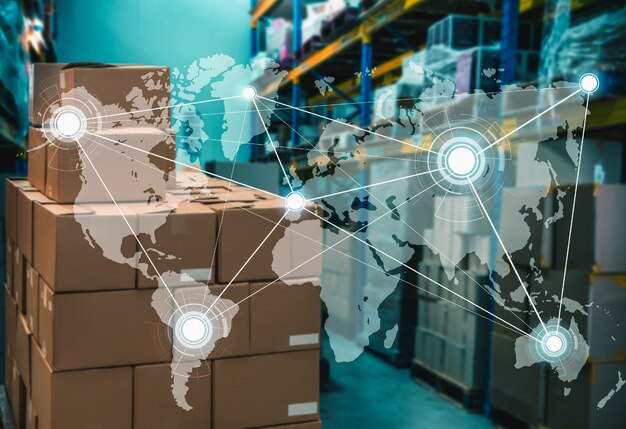Setting up a distribution network in Botswana is a strategic move that can greatly enhance your business’s ability to reach customers effectively and efficiently. As one of Southern Africa’s rapidly developing markets, Botswana presents numerous opportunities for businesses looking to expand their reach in the region. However, establishing a successful distribution network requires careful planning, local market knowledge, and a strategic approach. This article will provide a step-by-step guide on how to set up a distribution network in Botswana.
1. Understand Botswana’s Market Dynamics
Before setting up a distribution network in Botswana, it’s important to have a thorough understanding of the local market. Botswana’s economy is driven by industries such as mining, agriculture, and tourism, with retail and e-commerce also growing rapidly. Understanding the market demands, regional preferences, and buying behaviors will allow you to tailor your distribution strategy effectively.
- Market Research: Conduct in-depth market research to understand the distribution channels currently in use, the customer segments you wish to target, and the competition you may face. Botswana has a relatively small population but is geographically diverse, so distribution strategies may vary depending on urban and rural needs.
- Regulatory Environment: Botswana has a stable and business-friendly regulatory environment, but it’s important to understand the legal requirements regarding imports, exports, customs duties, and taxation. Ensure compliance with the Botswana Unified Revenue Service (BURS) and the Botswana Trade and Industry Ministry.
2. Choose the Right Distribution Model
Choosing the right distribution model is key to the success of your network. Your choice will depend on the nature of your product, your target market, and your business goals. There are several distribution models to consider:
- Direct Distribution: This model involves selling directly to customers without using intermediaries. This can be effective in Botswana’s urban areas like Gaborone and Francistown, where infrastructure is more developed. A direct distribution approach may include establishing your own retail outlets or an e-commerce platform.
- Wholesale Distribution: If your business targets smaller retail outlets or other businesses, working with wholesalers can be a cost-effective way to reach a wide market. Partnering with local wholesalers who already have established networks can help you quickly enter the market.
- Franchising: If you have a proven business model and want to scale rapidly in Botswana, franchising may be a viable option. This allows local entrepreneurs to operate businesses under your brand, expanding your distribution network while reducing your operational costs.
- Agent or Distributor Model: This involves partnering with local agents or distributors who will sell your products on your behalf. Local distributors can help navigate Botswana’s diverse regions, ensuring that your products are available in areas that may be logistically challenging for direct delivery.
3. Select the Right Distribution Channels
Once you have chosen your distribution model, you need to identify the most effective distribution channels. In Botswana, both traditional and modern distribution channels are available, and combining both may offer the best results.
- Retailers: Traditional brick-and-mortar stores remain a key channel for many products in Botswana. Identify key retailers in urban centers such as Gaborone, Lobatse, and Maun, and build relationships with them. These retailers can be small family-owned businesses or large supermarket chains.
- Online Platforms: With the rise of e-commerce in Botswana, online platforms are becoming increasingly important for distribution. Local platforms such as Shop Botswana or international ones like Amazon and eBay can be effective for reaching tech-savvy customers, especially in urban areas.
- Logistics and Delivery Services: Reliable transportation and logistics partners are essential for reaching customers across Botswana. Partnering with established logistics companies can help ensure timely deliveries, especially to remote areas. Botswana has a well-developed road network, but for more remote areas, you may need to consider airfreight or other specialized services.
4. Establish Strategic Partnerships
Building strong relationships with local partners is critical to the success of your distribution network. In Botswana, partnerships with local businesses can provide valuable insights and help you overcome market entry challenges.
- Local Distributors and Agents: Engage with experienced local distributors or agents who understand the market dynamics and have established connections. These partners can help you navigate local regulations, build brand awareness, and drive sales.
- Government and Regulatory Bodies: Working with government agencies, such as the Botswana Investment and Trade Centre (BITC), can provide access to information and incentives designed to attract foreign investment. Understanding the legal landscape is crucial for compliance and avoiding costly mistakes.
- Industry Associations: Joining industry associations, such as the Botswana Chamber of Commerce and Industry (BCCI), can help you network with other business owners, gain market insights, and stay informed about local trends and developments.
5. Set Up Efficient Logistics and Inventory Management
Efficient logistics and inventory management are vital components of a successful distribution network in Botswana. To ensure your products are available when and where they’re needed, consider the following:
- Warehousing: Establish a central warehouse or regional storage facilities to manage stock effectively. Botswana’s central location within Southern Africa makes it an ideal hub for distributing products to neighboring countries, such as South Africa, Namibia, and Zambia.
- Inventory Tracking: Implement an inventory management system that provides real-time data on stock levels, sales trends, and product demand. This will allow you to avoid stockouts or excess inventory, ensuring you can respond quickly to changing customer needs.
- Efficient Transportation: Choose reliable transportation providers who can handle the logistics of delivering products across Botswana’s diverse geography. With Botswana’s vast rural areas, long-distance delivery may require specific strategies such as leveraging local vehicles or airfreight for more remote locations.
6. Monitor and Optimize Performance
Once your distribution network is set up, it’s crucial to monitor its performance regularly and make adjustments as needed. Continuously optimizing your network ensures that your products are reaching customers efficiently and that you are meeting demand in a cost-effective way.
- Key Performance Indicators (KPIs): Track KPIs such as delivery times, customer satisfaction, sales volume, and stock turnover rates to measure the effectiveness of your distribution network.
- Customer Feedback: Regularly seek feedback from customers, retailers, and distributors to identify pain points in the distribution process and areas for improvement. In Botswana, where word-of-mouth and personal relationships are important, customer feedback can provide invaluable insights.
- Technology Integration: Use technology to streamline operations. Tools like Enterprise Resource Planning (ERP) systems, mobile apps, and online tracking platforms can help manage your distribution network more efficiently and reduce errors.
7. Adapt to Local Preferences and Trends
To succeed in Botswana’s market, your distribution network must be adaptable to local preferences and trends. Consumer behavior in Botswana may differ from other regions, so understanding these nuances will give you an edge.
- Product Customization: Consider customizing your products to cater to the preferences of Botswana’s consumers. For example, local tastes, cultural preferences, and climate conditions may influence the demand for certain products.
- Seasonal Adjustments: Botswana experiences a semi-arid climate, with rainy seasons and dry periods. Plan your distribution strategy to account for seasonal demand fluctuations, particularly in industries such as agriculture, tourism, and fashion.
Setting up a distribution network in Botswana requires a strategic approach, a solid understanding of the local market, and efficient logistics. By choosing the right distribution model, establishing strong local partnerships, implementing effective logistics systems, and continuously optimizing your performance, you can build a distribution network that supports your business’s growth and success in Botswana’s dynamic economy. With careful planning and adaptability, your distribution network can help you expand your reach, increase sales, and establish a strong presence in Botswana’s competitive marketplace.






